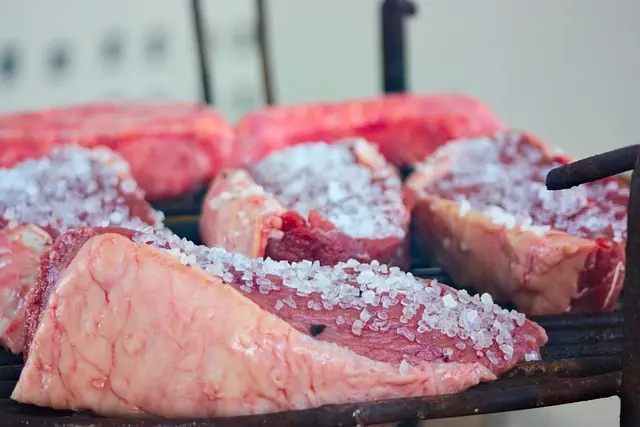Kratom (Mitragyna speciosa), a plant from Southeast Asia with alkaloids like mitragynine and 7-hydroxymitragynine, has garnered attention within athletic communities for its potential to enhance sports performance by affecting pain, mood, and energy. These effects are due to its interaction with opioid receptors in the brain. Athletes interested in kratom should cultivate it outdoors under optimal conditions—warm temperatures (20-35 degrees Celsius), moderate rainfall, and well-draining, fertile soil with a pH of 5.5 to 7.0. Outdoor cultivation requires careful site selection, pruning, training for young trees, and protection from extreme weather to ensure consistent growth and high-quality leaves. While it holds promise for performance enhancement, its use should be approached with caution due to regulatory scrutiny and ongoing scientific discussions about its efficacy and safety. It is crucial for individuals to comply with local laws and consult medical professionals before engaging with kratom, whether for cultivation or consumption, to ensure responsible and legal use in line with athletic performance optimization strategies.
exploration into the natural realm of athletic performance enhancement unveils the potential of kratom, a botanical subject of increasing interest among athletes seeking to amplify their training and competition outcomes. This article delves into the intricate details of understanding kratom’s role in this arena, followed by a practical guide on how to cultivate kratom outdoors, with a focus on optimal climate, soil conditions, and care protocols. Finally, we’ll navigate the strategic integration of kratom into athletic training regimens for athletes aiming to achieve peak performance. Growing kratom outdoors can be a rewarding endeavor when approached with the right knowledge, offering a natural alternative in the pursuit of enhanced athletic capabilities.
- Understanding Kratom and Its Role in Athletic Performance Enhancement
- The Process of Growing Kratom Outdoors: Climate, Soil, and Care Requirements
- Strategic Integration of Kratom into Athletic Training Regimens for Optimal Results
Understanding Kratom and Its Role in Athletic Performance Enhancement

Kratom, a tropical evergreen tree native to Southeast Asia, has garnered attention within athletic circles for its potential role in performance enhancement. The plant belongs to the Rubiaceae family and contains over forty alkaloids, with mitragynine and 7-hydroxymitragynine being the most abundant and well-researched. These compounds are believed to interact with opioid receptors in the brain, influencing pain perception, mood, and energy levels—factors that can significantly impact athletic performance. For athletes seeking to optimize their training and competition outcomes, understanding how kratom interacts with the body is crucial. While cultivating kratom outdoors requires specific conditions such as humid tropical climates, high light exposure, and well-draining soil, enthusiasts and users interested in its effects have explored both natural and controlled environments to grow this plant. The ability to cultivate kratom outdoors allows for a sustainable and potentially cost-effective approach to accessing the plant, which can be particularly beneficial for athletes who require consistent dosing as part of their training regimen. It is important to note that while kratom may offer certain advantages, its use is surrounded by regulatory considerations and scientific debate regarding its efficacy and safety in enhancing athletic performance. Users should exercise caution, adhere to local laws, and consult with healthcare professionals before integrating kratom into their training routines.
The Process of Growing Kratom Outdoors: Climate, Soil, and Care Requirements

Kratom (Mitragyna speciosa), a tropical evergreen tree native to Southeast Asia, requires specific environmental conditions to thrive when cultivated outdoors. Growing kratom outdoors in regions with similar climatic conditions to its natural habitat is ideal. The tree favors warm, humid environments with consistent temperatures ranging between 20-35 degrees Celsius and can tolerate a wide range of rainfall, though it prefers moderate levels to maintain soil moisture.
For those looking to grow kratom outdoors, selecting the right location and understanding the soil composition is crucial. The tree should be planted in well-draining, fertile soil with a slightly acidic pH, around 5.5 to 7.0. It is adaptable to various types of soil but performs best when the nutrient content is rich. Regular pruning and training of young trees can encourage a robust structure, and careful management of sunlight exposure is necessary to prevent leaf burn or inconsistent growth. Additionally, protecting the plants from extreme weather conditions, such as harsh winds or heavy frosts, is essential for their survival and optimal growth. With attentive care and an environment that mimics its native conditions, growing kratom outdoors can be a rewarding endeavor, yielding leaves with the potential to enhance athletic performance when used responsibly in conjunction with proper training regimens and under the guidance of a healthcare professional.
Strategic Integration of Kratom into Athletic Training Regimens for Optimal Results

Athletes and trainers are increasingly exploring the integration of kratom, a plant-based compound from Southeast Asia, into athletic training regimens to enhance performance. Kratom is renowned for its alkaloids, which can influence pain perception, endurance, and energy levels. When strategically incorporated, these properties can be leveraged to support athletes’ training programs. For instance, kratom’s analgesic effects can aid in recovery by mitigating muscle soreness, allowing for more intense and frequent training sessions without overtraining syndrome. Furthermore, the stimulant properties of certain kratom strains can enhance focus and stamina, crucial for endurance sports or high-intensity workouts.
To effectively integrate kratom into athletic training, it’s essential to understand its impact on different physiological systems and how it can complement other performance-enhancing practices. The choice of kratom strain—whether it be the more energizing varieties like Maeng Da or the sedating ones like Bali—can dictate the time of day it is administered, influencing either the initiation or conclusion of training sessions. Additionally, the cultivation of kratom outdoors can optimize its potency, as plants thrive in environments that mimic their natural habitat. This approach not only aligns with sustainable and eco-friendly practices but also ensures that athletes using kratom are receiving a high-quality product for their training needs. Careful dosing and monitoring are paramount to achieve the desired outcomes without risking adverse effects, ensuring that performance enhancement is achieved in a responsible manner.
In conclusion, the exploration of kratom as a tool for athletic performance enhancement offers promising insights, particularly when it comes to cultivating kratom outdoors. By understanding the specific climate and soil conditions required for optimal kratom growth, athletes and trainers can strategically integrate this botanical into training regimens to potentially enhance performance. The guidance provided in this article underscores the importance of a nuanced approach to integrating kratom, ensuring that it complements training routines effectively. As with any supplement, it’s crucial for athletes to follow best practices and consult with healthcare professionals before incorporating kratom into their regimen. With careful consideration and adherence to cultivation techniques suitable for outdoor environments, kratom may serve as a valuable component in the pursuit of athletic excellence.






